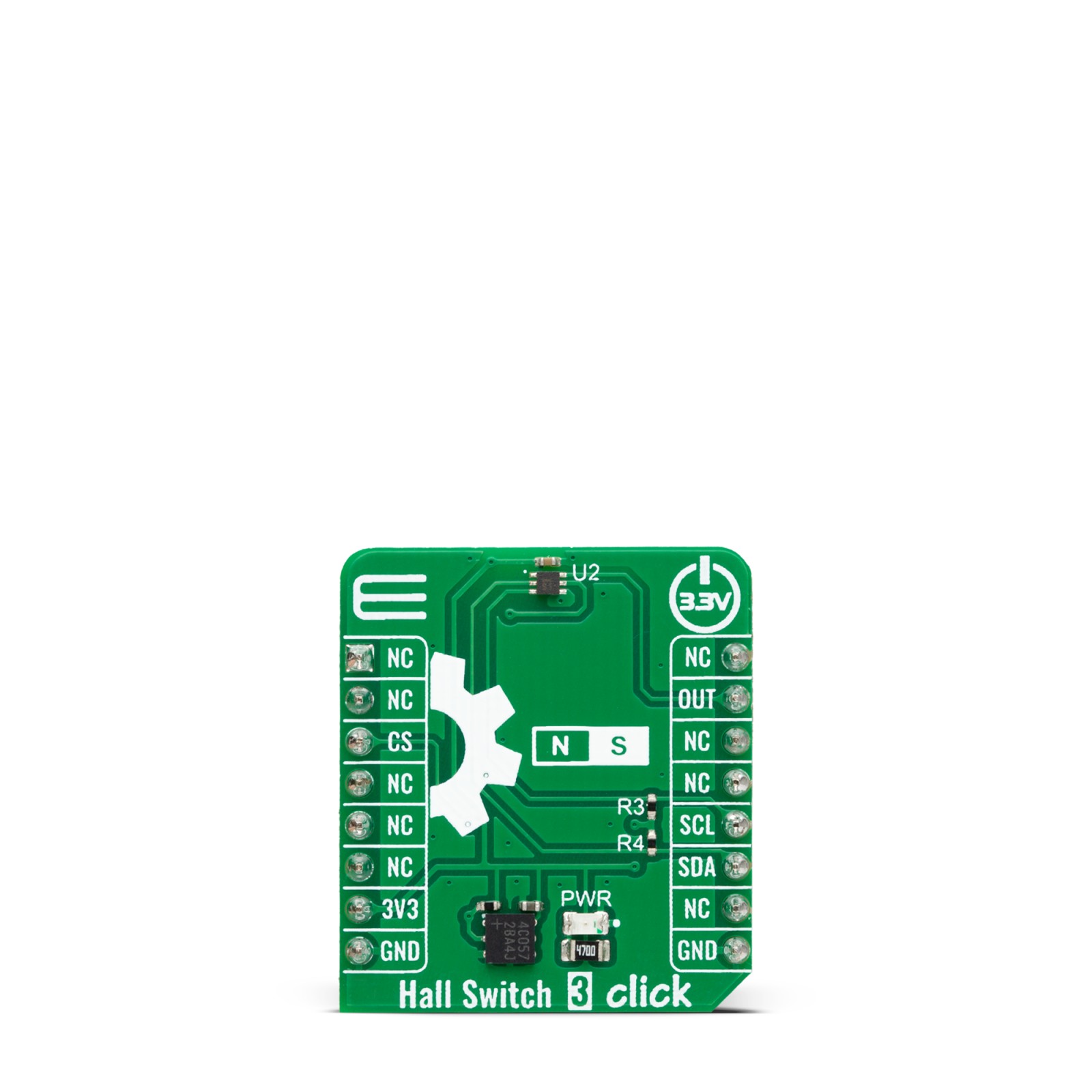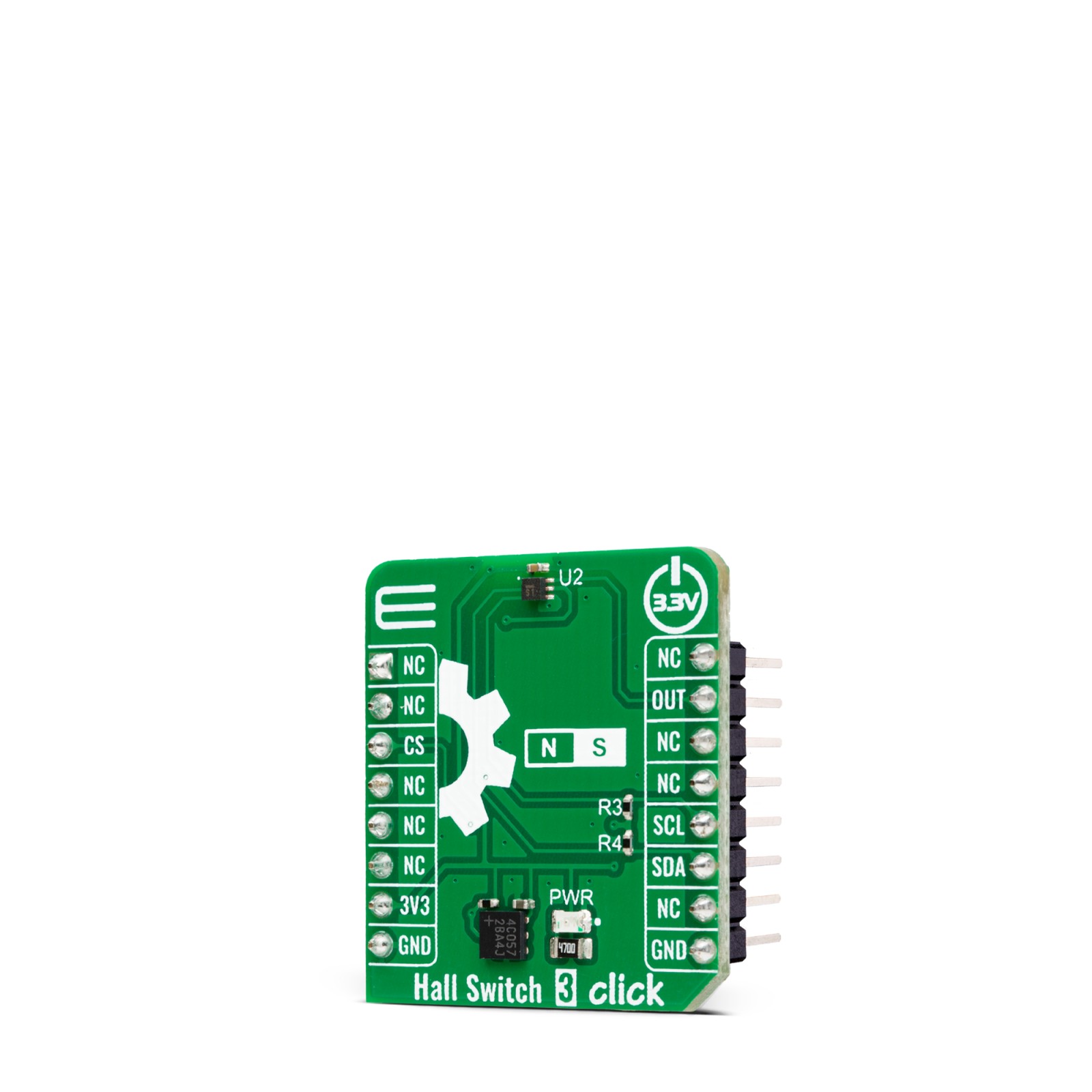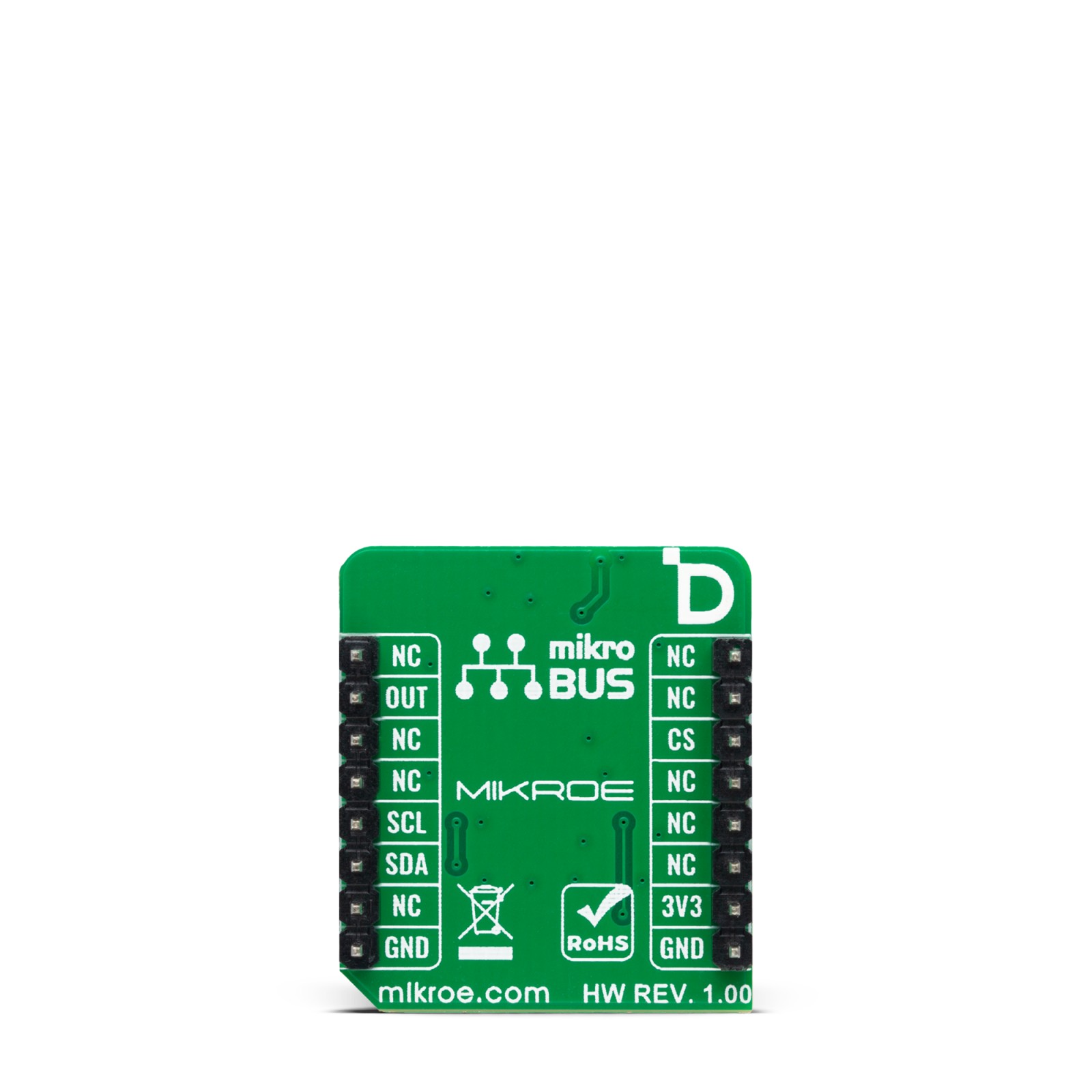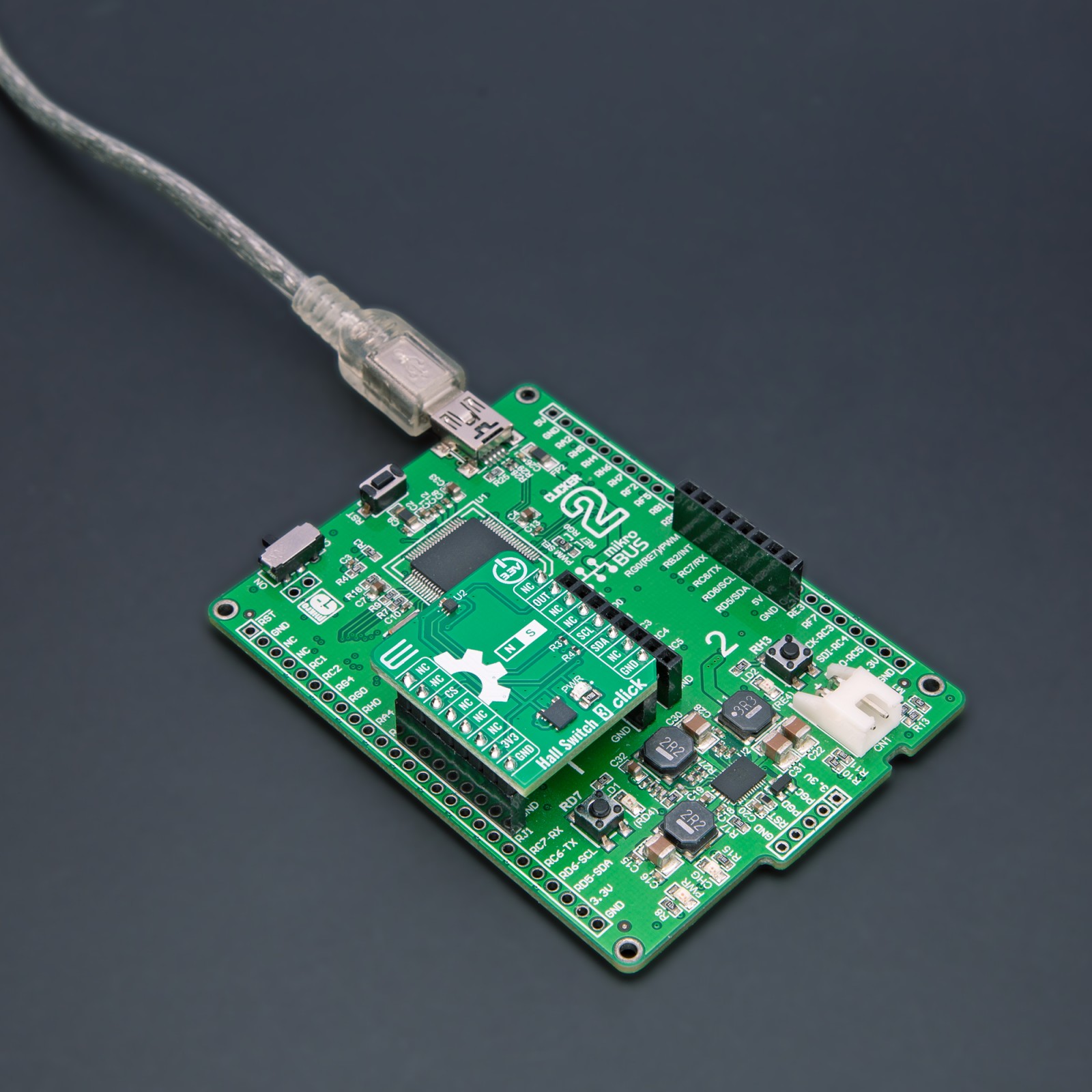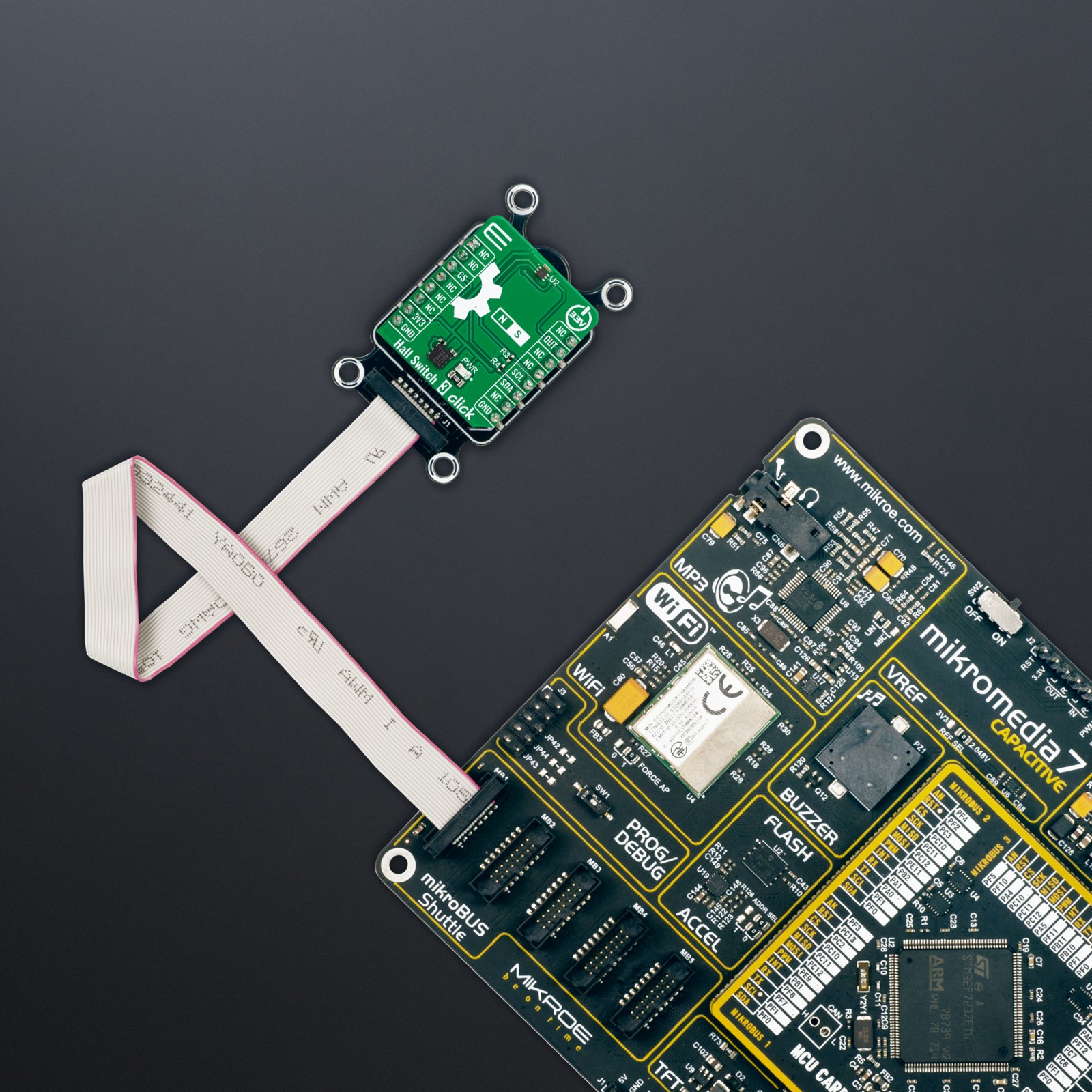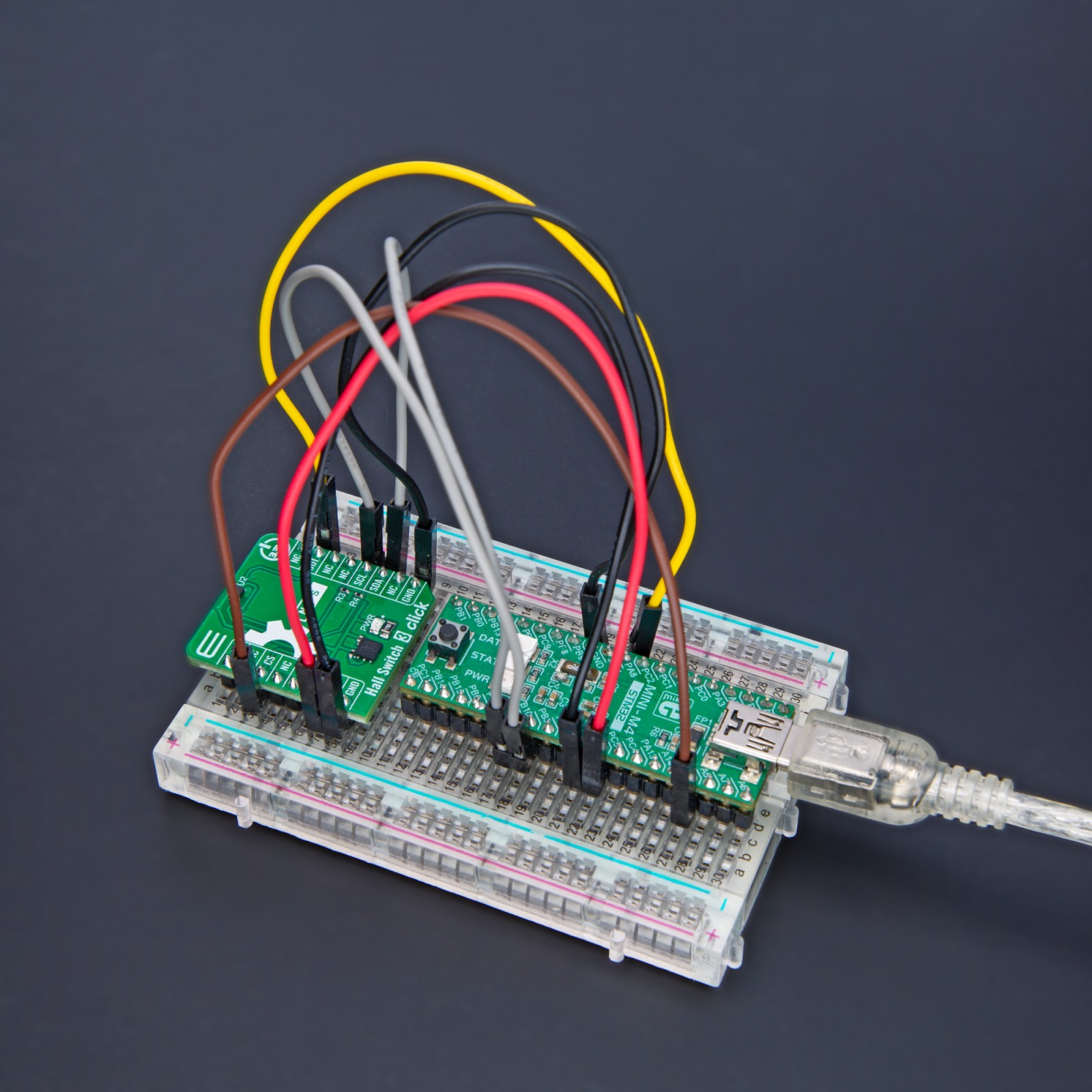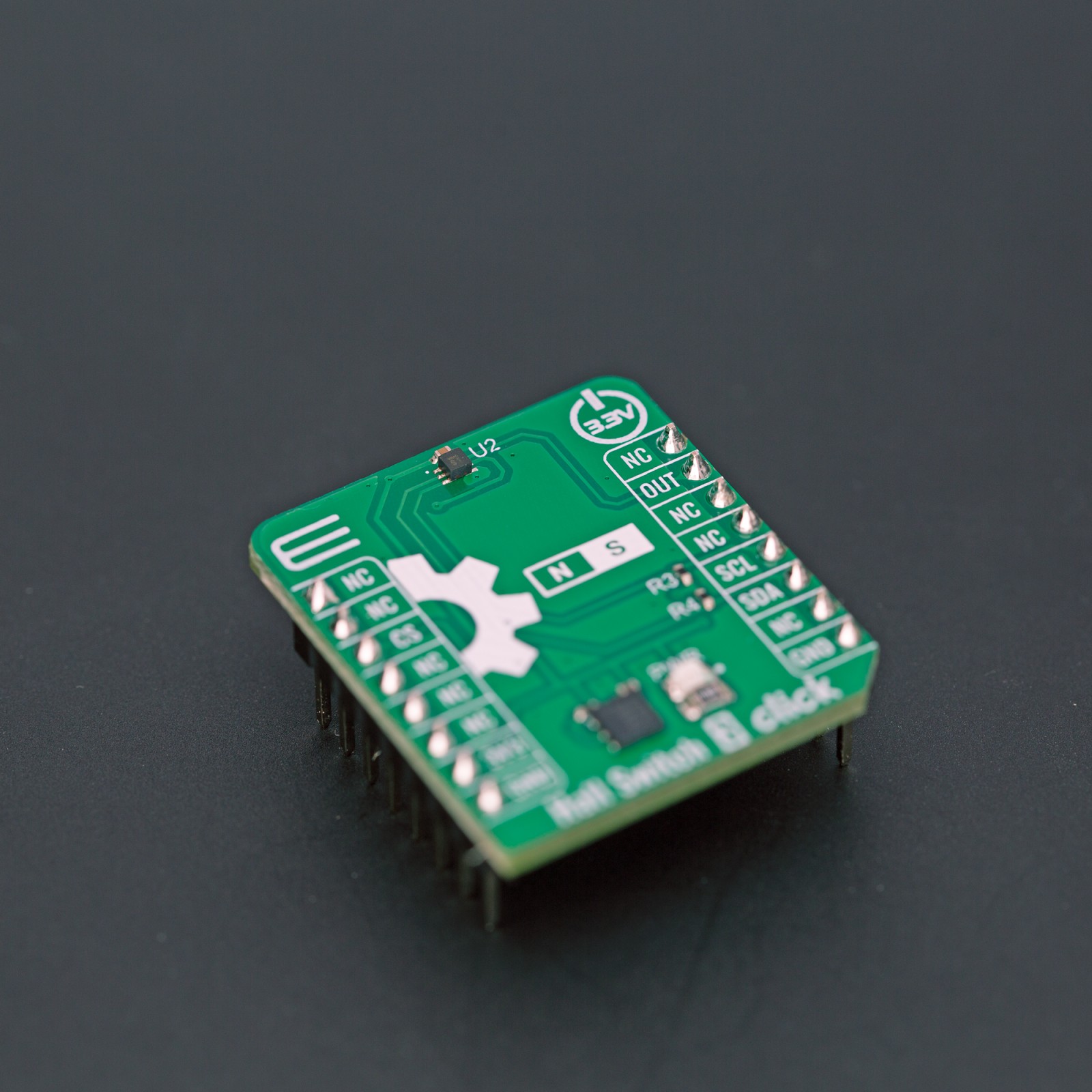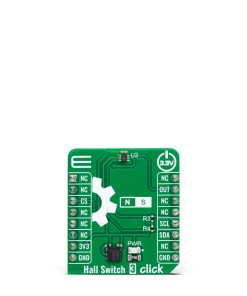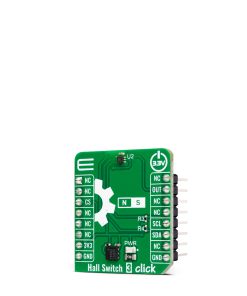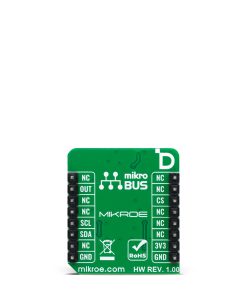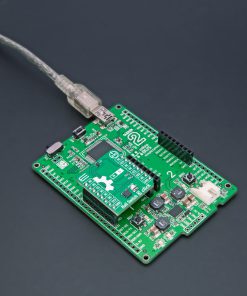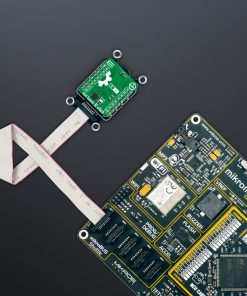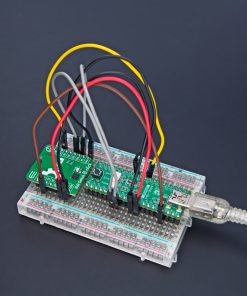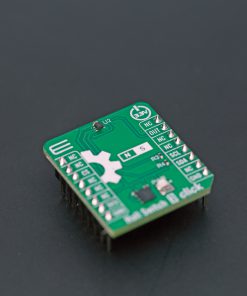Hall Switch 3 Click is a compact add-on board representing a magnetic field-activated switch. This board features the NMH1000, a Hall-effect magnetic switch from NXP Semiconductor. It is a low-voltage, low-current, and low-output data rate device with a very small size. The switch is most sensitive to a vertical field passing through the top-bottom surfaces, orthogonal to the plane of the Hall Switch 3 Click board™. This Click board™ makes the perfect solution for the development of electronic system wake-up, home automation systems (door or window open/close), contactless switches, lids or tray position detecting switches, proximity detection applications, and more.
Hall Switch 3 Click is fully compatible with the mikroBUS™ socket and can be used on any host system supporting the mikroBUS™ standard. It comes with the mikroSDK open-source libraries, offering unparalleled flexibility for evaluation and customization. What sets this Click board™ apart is the groundbreaking ClickID feature, enabling your host system to seamlessly and automatically detect and identify this add-on board.
 MP3 Click
1 × R480.00
MP3 Click
1 × R480.00  3D Motion Click
1 × R1,050.00
3D Motion Click
1 × R1,050.00  GPS Click
1 × R1,050.00
GPS Click
1 × R1,050.00  GSM/GNSS Click
1 × R1,650.00
GSM/GNSS Click
1 × R1,650.00 
